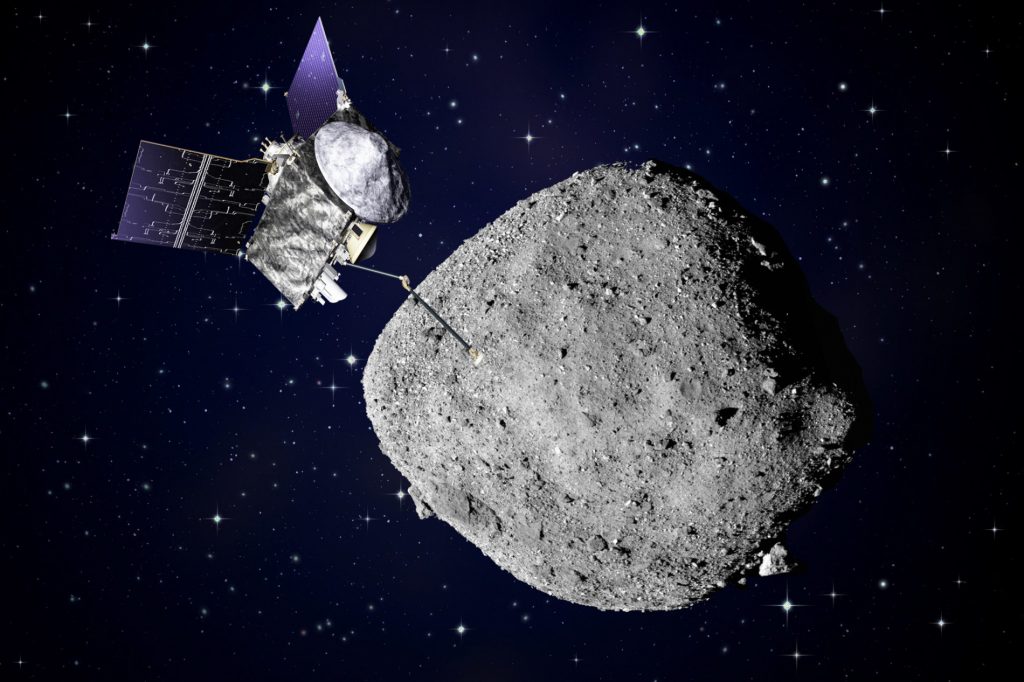KFU astronomers explain why asteroid Bennu resembles a spinning top

A paper saw light in Zhurnal Tekhnicheskoi Fiziki.
“It is generally accepted that planets have a spherical shape. At the same time, there is a class of celestial objects with an unusual structure. The latter includes the near-Earth asteroid Bennu, 560 meters in size, having a diamond shape. Currently, Bennu is the most mysterious celestial body,” explains Professor, Research Supervisor of the Engelhardt Astronomical Observatory Yury Nefedyev, adding that in the recent past this asteroid was considered one of the main space threats to our planet.
The NASA Osiris-REX space probe was sent to Bennu. When it reached the surface, it turned out that the asteroid is hollow inside or has a very porous structure, Nefedyev notes.
“The probe sent a capsule with soil samples from the asteroid’s surface to Earth 7 years after the mission’s launch, while the probe itself traveled about 6 billion kilometers in space,” the Professor shares.
As Nefedyev explained, the study of the structural properties of the minor planet, carried out by KFU physicists, is based on data obtained by the OLA laser altimeter of the OSIRIS-Rex mission and the analysis of multispectral images (0.44–0.89 μm) of Bennu using the decomposition of the data into a harmonic series of spherical functions and the use of the author’s spectrum-fractal method. At the same time, he emphasized that the analysis of the structure and physical properties of various formations on asteroids is important for describing the processes of formation and destruction of their surfaces. The color and reflectivity characteristics of the surface in the visible spectrum provide important information about its evolutionary features.
“The Bennu model we constructed in our work includes both the height measurements and the influence of rotational and gravitational effects,” says Nefedyev. “The model shows that the equatorial region has a smoother surface than the direction toward the asteroid’s poles. This is explained by the fact that the asteroid is in the Roche rotational lobe. But most importantly, we were able to confirm the theoretical hypothesis that the effects of solar wind, gravity, and thermal gradients create a whole spectrum of stable orbits for particles emitted by Bennu. At the same time, small components less than 1 centimeter in size are removed from the ‘Bennu-emitted particles’ system itself, and the remaining ones return and concentrate in the region of Bennu’s equator, which is what causes its diamond-shaped form.”
We can say that the particles settling on the asteroid’s surface are concentrated in the region of the equator and form a so-called ridge there. Hence the mysterious form, Nefedyev clarifies.
The study was carried out within the Russian Science Foundation-supported project “Creation of a comprehensive digital model of selenographic navigation support for the lunar satellite system LNSS based on data from modern space missions, a high-precision theory of lunar dynamics, a synthetic method for robust evaluation of heterogeneous observations and the use of a complex of quantum-optical and satellite onboard optical means.” Young researchers from the Institute of Physics of Kazan Federal University took part – Associate Professor of the Department of General Physics Yekaterina Akhmedshina, Leading Researcher of the Center for Excellence in Cyber-Physical Systems, IoT and IoE Alexey Andreev, and PhD student Yury Kolosov.

